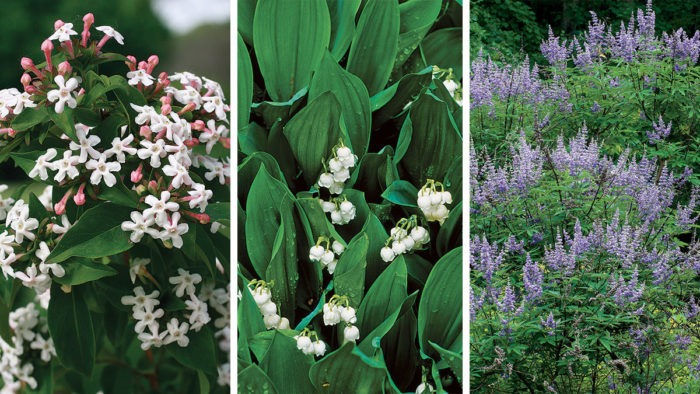
Most garden plants look good, but how many offer a scent as captivating as their appearance? And how often do we actually detect a scent? A kind breeze sometimes brings one to our notice, or we bury our face into flowers for a whiff. Make fragrance a daily delight by lining a garden path with gorgeous, scented plants. The key is to use a variety that releases its perfume at different times of the year. Imagine your garden rising and falling through the seasons, with flowers, foliage, and scents ever changing. You’ll find yourself stopping to smell the garden every time you walk out the door, so you might want to kiss punctuality good-bye.
Early Season
Wisteria’s scent is as good as its looks
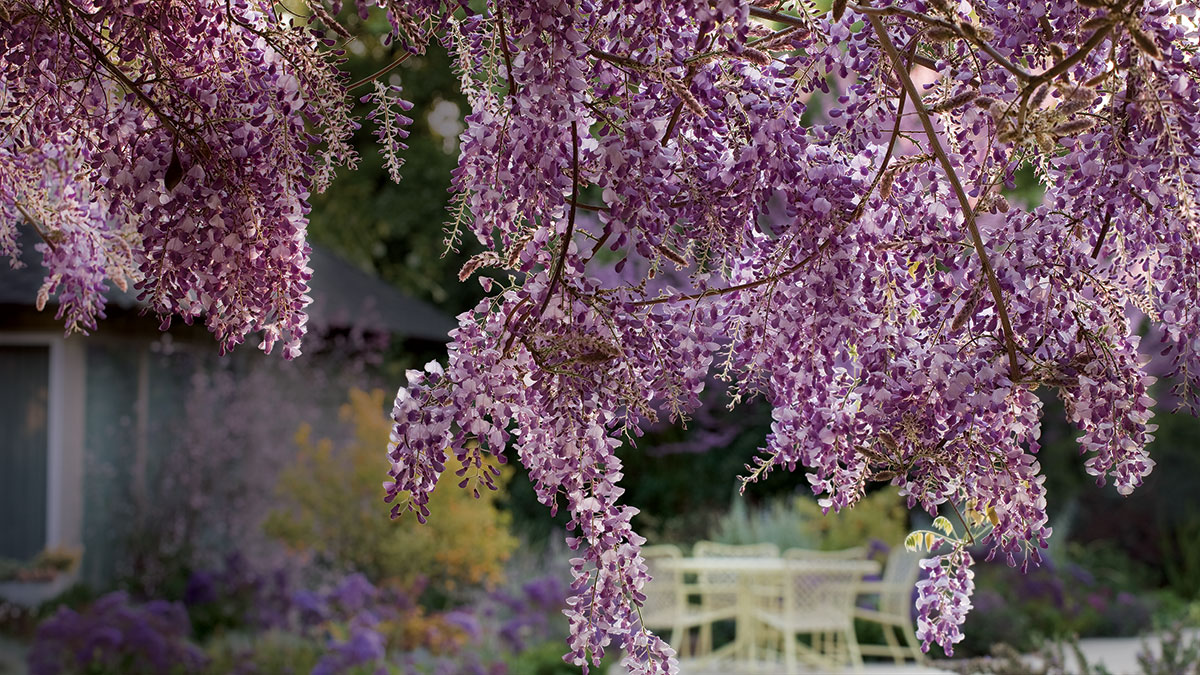
Wisteria sinensis and cvs.
USDA Hardiness Zones: 5 to 9
Size: 28 feet high and indefinite width
Conditions: Full sun to partial shade; fertile, well-drained soil
Wisteria’s fragrance is hard to describe; I’d say that it’s between that of sweet pea and vanilla jasmine. It’s something people should experience on their own. Wisteria can grow over a large arbor or be trained into a freestanding tree. It gets heavy, however, so if you place it on a trellis, make sure that the trellis is a strong one. Thinning out wisteria at least twice a year is required: once in late winter, and again after flowering to get rid of some of its leafy growth and to secure a strong floral display. Leaf buds should be shortened to three to five buds on each stem. They’re farther apart on long vigorous growth than flower buds, which are fat and close together on short flowering spurs. (Note: This species of wisteria is invasive in many areas. Check your state’s invasive plant list before buying)
‘Carol Mackie’ is the best of the fragrant daphnes
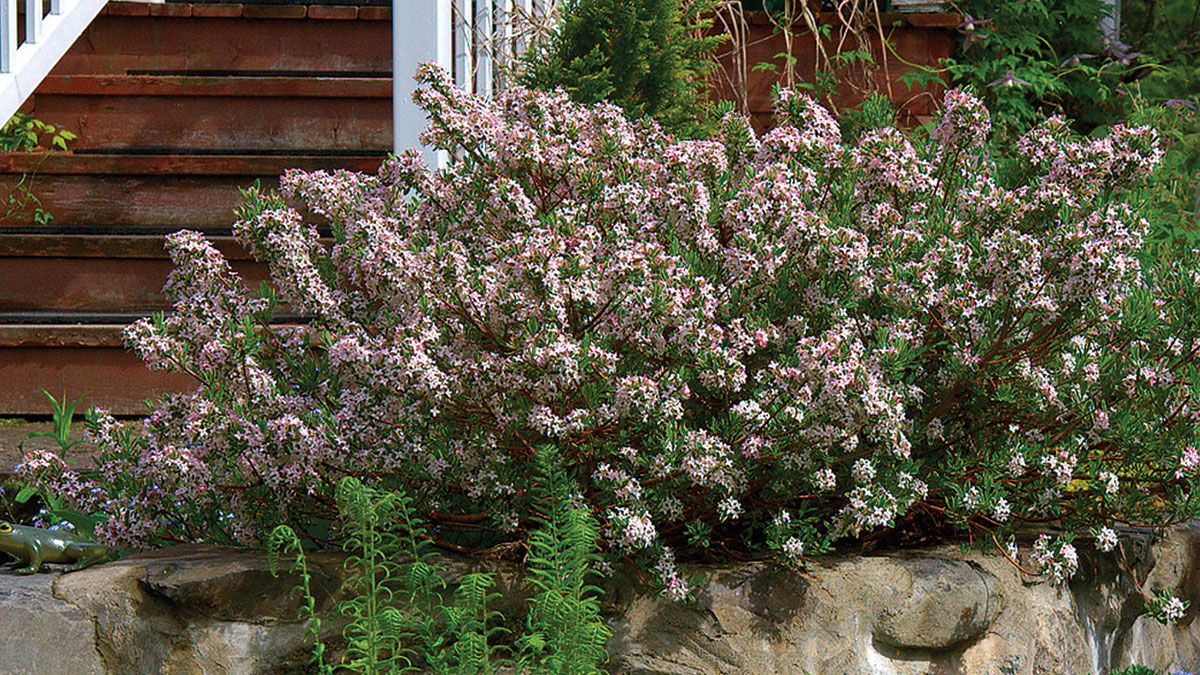
Daphne × burkwoodii ‘Carol Mackie’
Zones: 4 to 7
Size: Up to 4 feet tall and wide
Conditions: Full sun to partial shade; humus-rich, well-drained (but never dry) soil
Daphnes are cherished for their intense lemony aroma to which many other garden scents are compared. ‘Carol Mackie’ daphne blooms in early spring and gives off an especially strong fragrance, which might have you buying 10 more with which to line the rest of your path. Watering them can be a bit of a juggling act—water just enough to prevent the soil from drying out. Overwatering kills daphnes. This is probably how they earned a reputation for being difficult plants, but they’re a dream once you get the watering under control.
Daphnes hardly ever need pruning. But if you feel that you absolutely must prune, cut back only a few branches at a time. Because the plants are susceptible to fungal infection, cutting only a handful of branches leaves fewer points through which infection might enter. Cut on a dry morning, and apply fungicide afterward to lessen the risk of infection.
Convallaria majalis and cvs.
Zones: 2 to 7
Size: 9 inches tall, spreading indefinitely
Conditions: Full sun to full shade; humus-rich, moist soil
This little plant gives off a big-time fragrance. Don’t be duped by its short stature: You can savor its scent even while walking by upright. Plant it under larger plants for a mat of the sweetest-smelling ground cover around. One bulb fills a 4-inch-square space in the first season, but the plant will spread, over time, by underground rhizomes. Four or five plants will rapidly fill in to create a dense and fragrant patch. Small red berries appear on the plant in fall, when lily-of-the-valley should be divided to maintain vigorous growth.
There’s no spring scent quite like that of Bridal Bouquet® abelia
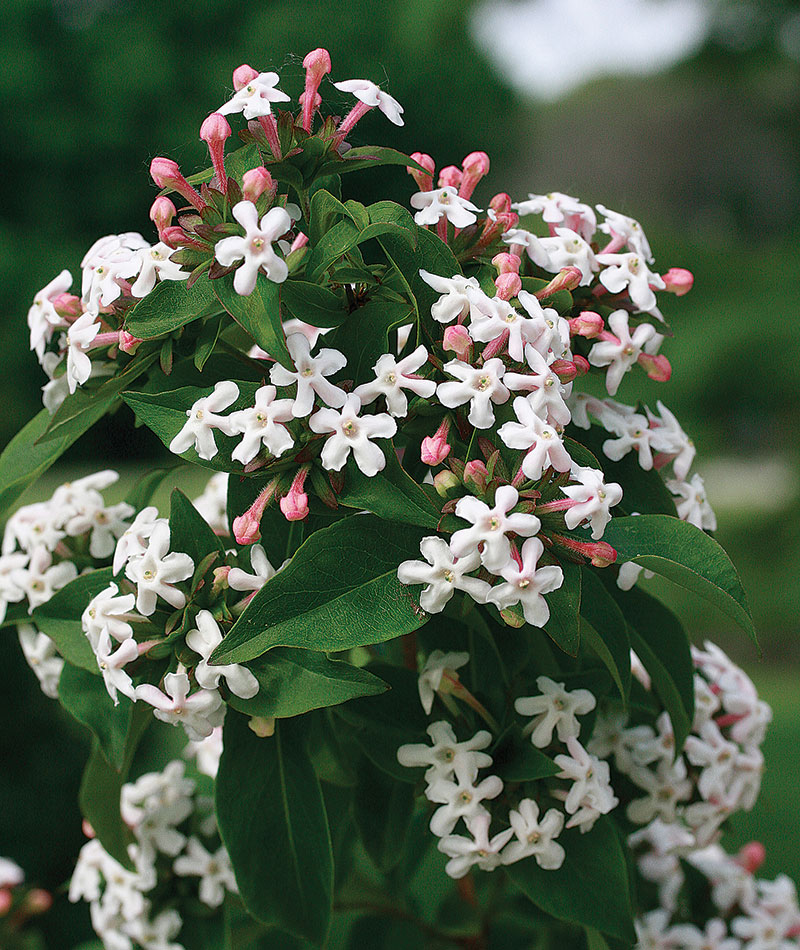
Abelia mosanensis ‘Monia’
Zones: 5 to 9
Size: 6 feet tall and 5 feet wide
Conditions: Full sun to partial shade; well-drained soil
Its strong fragrance can waft down 15 feet of path, so Bridal Bouquet® abelia is the go-to shrub for those looking for a fragrance factory. Its arching habit looks splendid in the middle of a bed, where it blooms from late spring to early summer, with its lilac-scented pink buds opening into tiny white trumpets. Red, orange, and yellow leaves make up for its loss of scent in fall. After letting Bridal Bouquet® establish for three or four years, remove one-third of its oldest canes annually after flowering to keep its size manageable.
Evergreen clematis will fill an arbor with its aroma
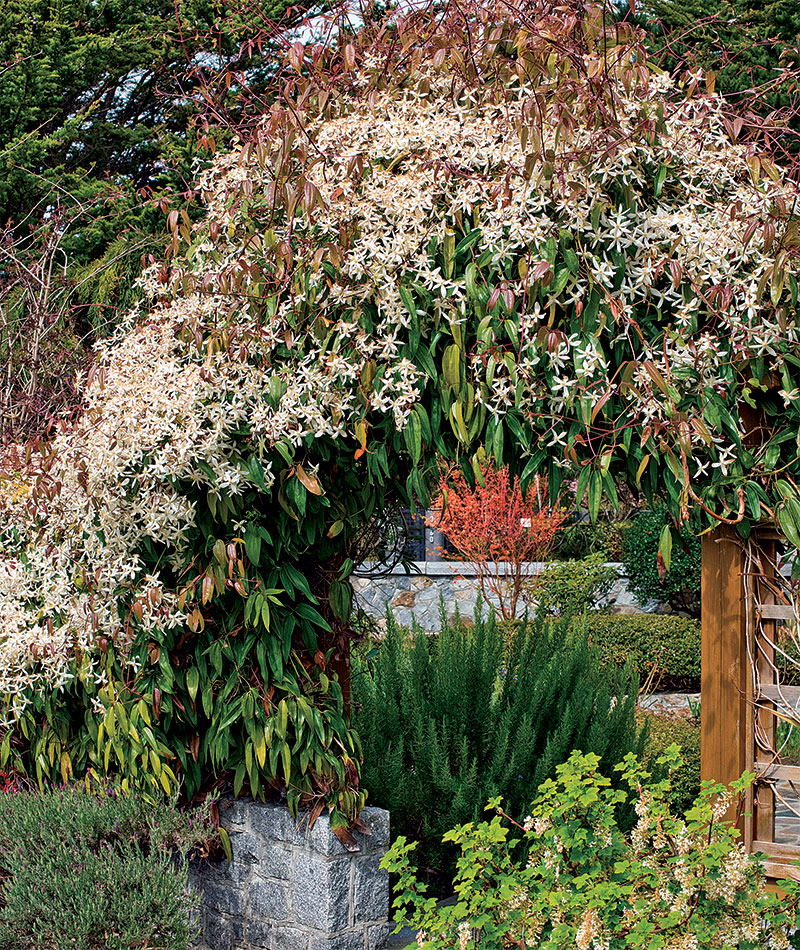
Clematis armandii
Zones: 7 to 11
Size: Up to 15 feet tall and 10 feet wide
Conditions: Full sun to partial shade; fertile, well-drained soil
So you’re after an aromatic climber. Look no further than evergreen clematis, which produces vanilla-scented white flowers in midspring. Its leathery leaves hang down in a showy, dark green cascade all year long. It’s best to train evergreen clematis over an arbor or pergola so that it can be enjoyed from within the structure. It grows slowly in its first couple of years, but after that, I’ve seen the vine take off and reach 30 feet tall in Zones 7 and 8. Prune evergreen clematis after its flowers fade; it blooms on the tips of the previous season’s growth, so pruning it later in the season will sacrifice the following year’s flowers.
Midseason
Harlequin glory bower is a plant of many perfumes
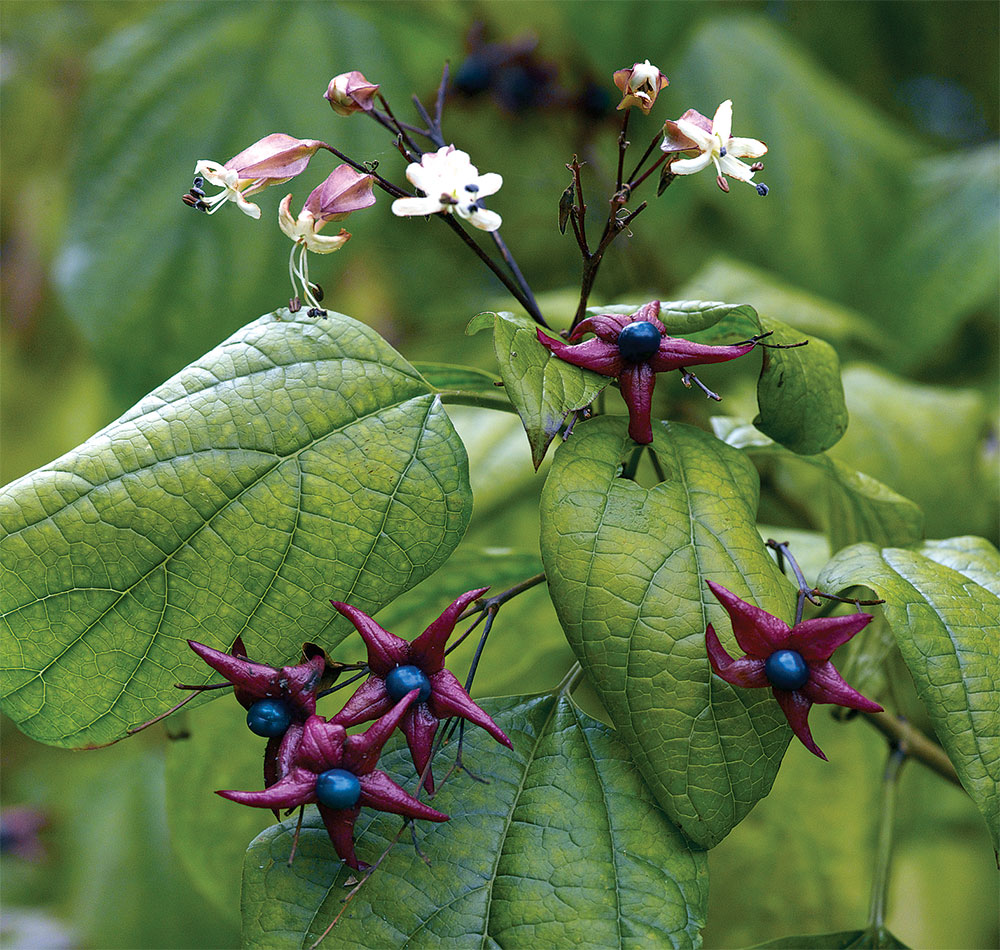
Clerodendrum trichotomum
Zones: 7 to 9
Size: 15 to 20 feet tall and wide
Conditions: Full sun; moist, well-drained soil
Clusters of creamy white flowers fill the canopy of harlequin glory bower in early summer and waft jasmine-like up to 25 feet away. But the scents don’t stop there. If the leaves are crushed, they release a peanut-buttery smell, which is why the shrub is also known as peanut butter bush. If that doesn’t make harlequin glory bower exotic enough, its berries surely will. When spent flowers fall away, a turquoise blue berry appears. Each one is surrounded by red sepals, creating a breathtaking display until they are eaten by birds. Grow harlequin glory bower as a tree or multistemmed shrub. As a shrub, its outer branches sometimes create a bower (hence, the name). You’ll also get more flowers—and fragrance—in the shrub form.
The aromas of Oriental lilies are as classic as an Austen novel
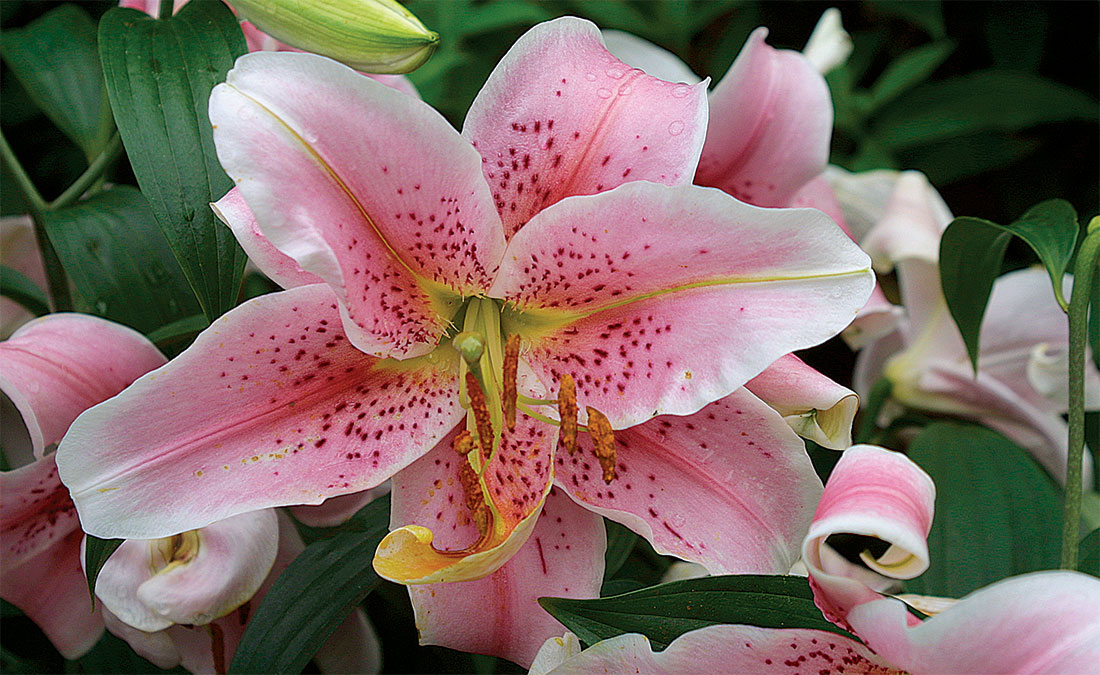
Lilium cvs.
Zones: 4 to 9
Size: 1 to 6 feet tall and 1 to 2 feet wide
Conditions: Full sun; well-drained soil
When it comes to Oriental lilies, my motto is, “The more, the better.” Their scent is well known and loved, and it is strongest in the afternoon when sunlight warms the flowers and gets their fragrance going. Groups can be tucked into almost any spot along a path. Place them either in the middle layer of the bed for height or right up at the edge to encourage passersby to stick their nose into the glorious flowers. Some great lilies include ‘Casa Blanca’, which is the best white variety; ‘Star Gazer’ (pictured), a great cut flower for bouquets; and ‘Conca d’Or’, a beautiful yellow lily—and my absolute favorite.
‘Black Negligee’ actaea offers dark leaves and an alluring scent
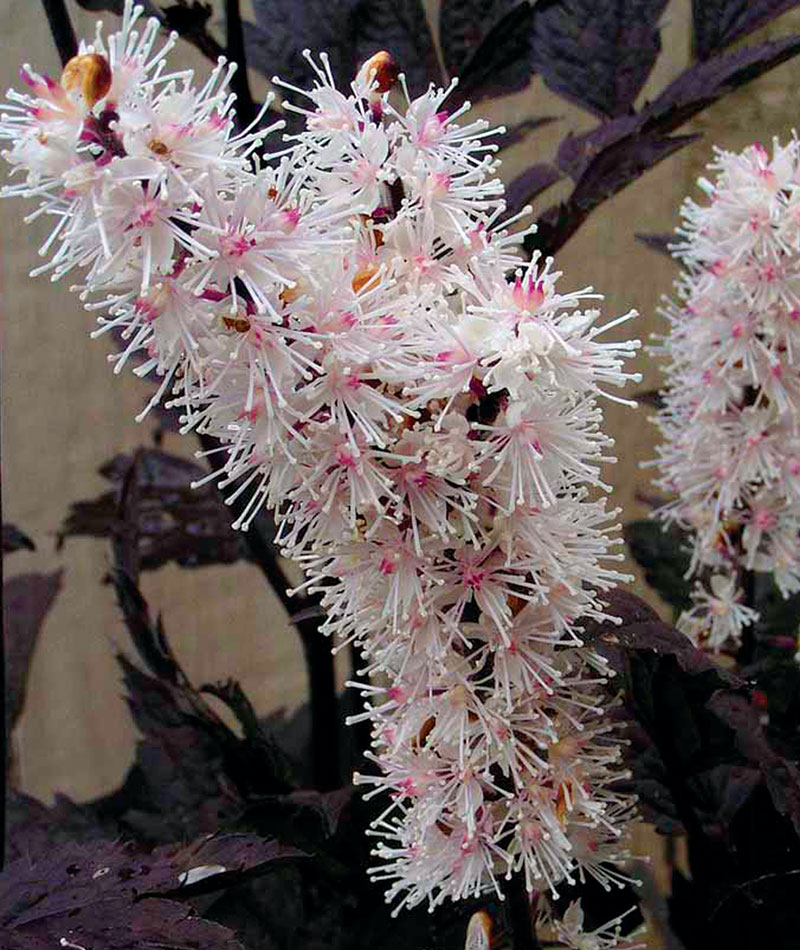
Actaea simplex ‘Black Negligee’
Zones: 4 to 8
Size: 4 to 6 feet tall and 4 feet wide
Conditions: Partial shade; moist, well-drained soil
‘Black Negligee’ actaea smells slightly fruity with baby-powder overtones; that sounds odd, but it’s really a pleasant scent. The foliage is purplish black, lacy, and sexy. By midsummer, tall wands are covered with small white flowers. Plant ‘Black Negligee’ at a path’s edge so that its exquisite leaves and sweet scent can be appreciated. If the stems are left to go to seed in fall, birds will perch and peck away at them all winter long.
Late Season
Chaste tree: a plain name for a seductively scented shrub
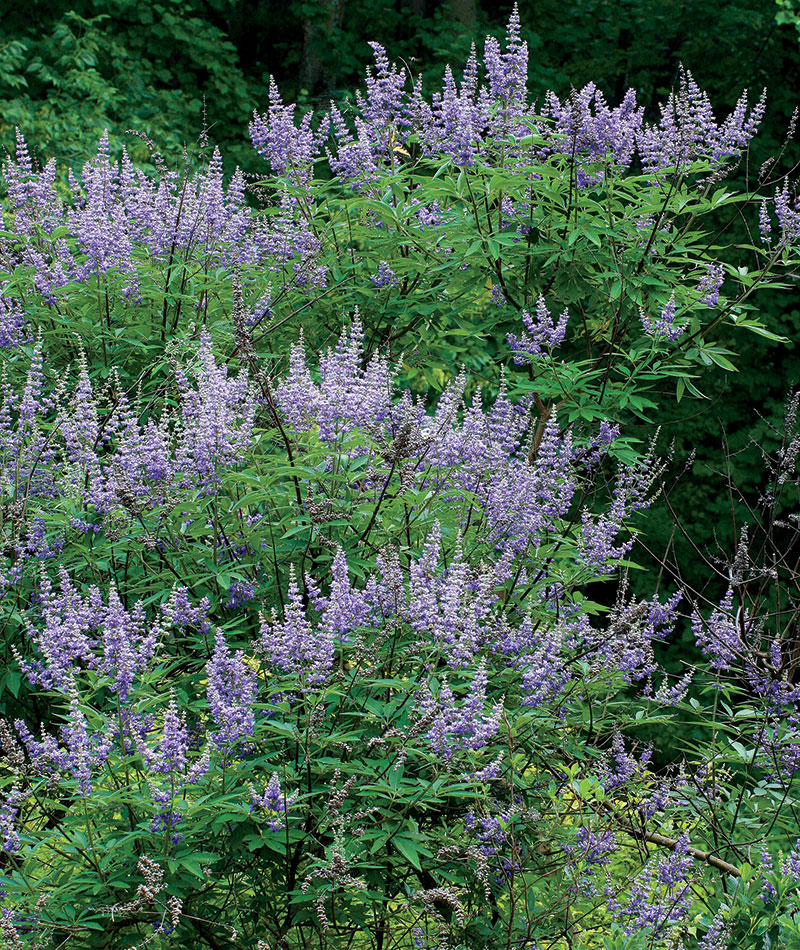
Vitex agnus-castus and cvs.
Zones: 6 to 9
Size: Up to 25 feet tall and wide
Conditions: Full sun; well-drained soil
Chaste tree is a large multistemmed shrub that blooms in early fall, perfect for adding scent and color to a garden bed as it comes down from its summer high. The soft blue flowers give off a sagelike fragrance and resemble those of a butterfly bush or lilac. Chaste tree also makes a lovely addition to fall bouquets. Because it blooms on current season’s wood, pruning should be done in early spring and only if a specimen really needs downsizing. Don’t let bare branches trouble you in spring; chaste tree doesn’t leaf out until early summer.
‘Pink Dawn’ viburnum has color and fragrance in winter
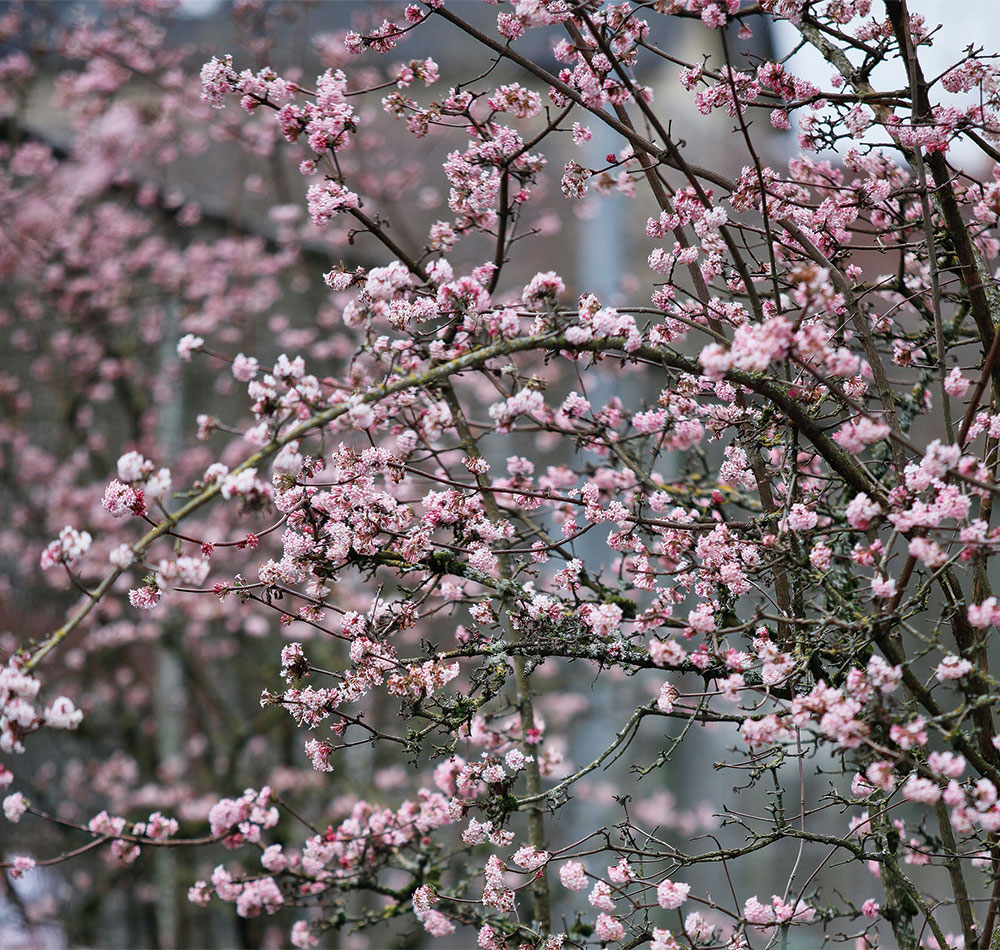
Viburnum × bodnantense ‘Pink Dawn’
Zones: 5 to 8
Size: Up to 10 feet tall and 8 feet wide
Conditions: Full sun to partial shade; moist, well-drained soil
This plant blooms on bare branches, its beautiful pink flower clusters appearing from early to midwinter. Its spicy-yet-sweet fragrance is a novelty in winter, when outdoor scents are few and far between. In spring, its leaves emerge burgundy with prominent veins; they age to green in summer and wine red in autumn. ‘Pink Dawn’ viburnum really is a plant for all seasons. Although it can tolerate partial to full shade, it does best in full sun; otherwise, its intense fall color will be compromised.
Danielle Ferguson and her family own and operate Ferguson’s Fragrant Nursery in St. Paul, Oregon.
Photos, except where noted: millettephotomedia.com
Sources
- Arrowhead Alpines, Fowlerville, Mich.; 517-223-3581; arrowhead-alpines.com
- B&D Lilies, Port Townsend, Wash.; 360-765-4341; lilybulb.com
- Fieldstone Gardens, Vassalboro, Maine; 207-923-3836; fieldstonegardens.com
- Forestfarm, Williams, Ore.; 541-846-7269; forestfarm.com
- Woodlanders, Aiken, S.C.; 803-648-7522; woodlanders.net





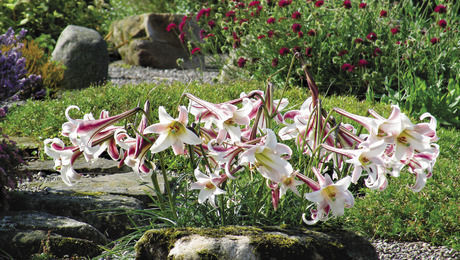





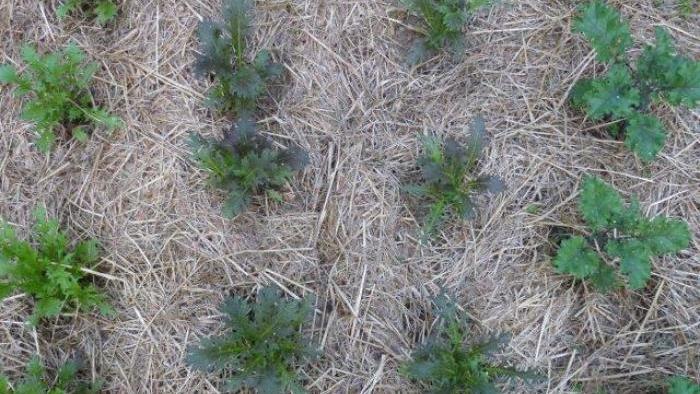

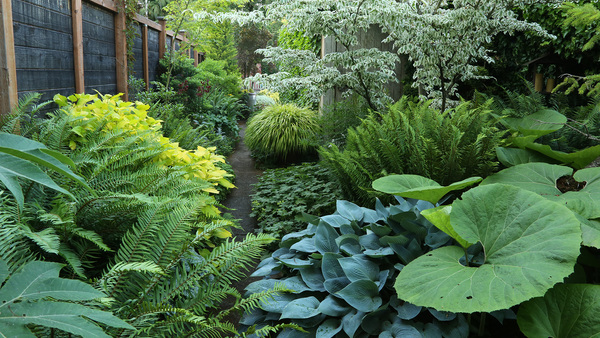




Comments
You forgot at least one. Hyacinths. You could also add the usual suspects like Roses.
You left out Clethera. It is the most fragrant of all! Its scent fills my yard for a week. Very strong and sweetly pleasant. Attracts all of the bee types. It spreads via stolons.
I agree! It just doesn't bloom long enough, does it?
It blooms about the same as other deciduous woody bushes, two weeks or more.
How about Astilbe 'Deutschland' . It's a keeper!
Phlox divaricata ' May Breeze' is also wonderful
I'm sure you left out a LOT of plants, but some of the ones you wrote about are new to me which is always nice. I especially am interested in the Pink Dawn Viburnum. It truly does sound like a plant for all seasons! Thank you for sharing!
When I lived in Japan, I enjoyed the scent of Osmanthus blooms. I have purchased multiple Osmanthus plants since returning to the US, but none have had the delightful fragrance of the ones I enjoyed in Japan. Does anybody have any idea which particular Osmanthus will provide that sweet smell here in the US?
Log in or create an account to post a comment.
Sign up Log in